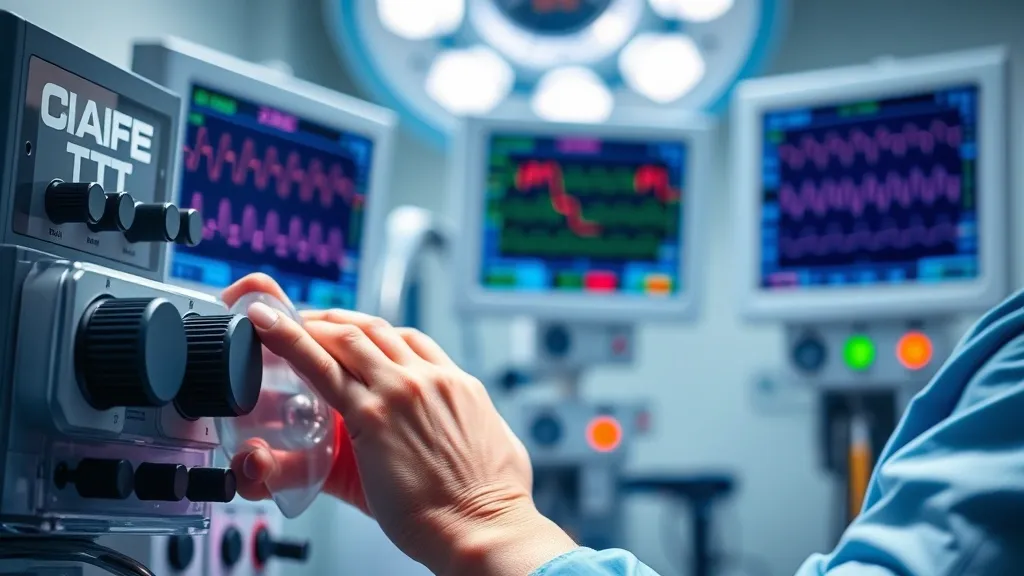The Heart of the Matter: What is Perfusion Technology?
Alright, let’s dive into the nitty-gritty of perfusion technology. You might be wondering, what the heck is perfusion anyway? Well, at its core, perfusion is all about getting blood (and all the good stuff that comes with it) flowing to the organs and tissues that need it. Think of it like a delivery service for oxygen and nutrients. When you’re in the operating room and things get serious, that’s when perfusion technology really struts its stuff.
So, how does it work? Picture this: during certain surgeries, especially those that involve the heart or major blood vessels, doctors need to temporarily take over the job of the heart and lungs. This is where the perfusionist comes in, armed with some pretty cool equipment. They use a heart-lung machine to pump and oxygenate the blood while the real deal takes a break. It’s kind of like giving your heart a mini-vacation while the perfusionist handles the heavy lifting. I mean, if only we could all take a vacation that easily, right?
But it’s not just about keeping the blood flowing. Perfusion technology involves monitoring and managing things like blood pressure, temperature, and oxygen levels. It’s all about keeping everything stable so the patient can float through surgery without a hitch. It’s a bit like being the DJ at a party—if you’re not keeping the right vibe, things can go south real quick.
Now, let’s not forget the training involved. Becoming a perfusionist isn’t something you can just wing. It takes a solid education and a lot of hands-on experience. These folks are like the unsung heroes of the OR, working tirelessly behind the scenes to make sure everything goes smoothly. It’s wild to think about how crucial their role is in surgeries that save lives.
In short, perfusion technology is all about keeping patients safe and sound during some of the most critical moments of their lives. It’s amazing how one field can change the game in patient care, isn’t it? I mean, who would’ve thought that blood-pumping machines could be so darn important? But they are, and that’s why we’re here talking about it!
Behind the Scenes: The Unsung Heroes of the Operating Room
When we think about the operating room, our minds usually jump straight to the surgeons, right? They’re the ones with the fancy titles and the cool scrubs, performing life-saving procedures. But let’s take a moment to shine a light on some of the other incredible folks who make it all happen—like perfusionists. Seriously, these guys and gals are the rock stars behind the scenes, and they totally deserve some love.
So, what exactly do perfusionists do? Well, they’re the ones in charge of the heart-lung machine during surgery. That machine is like the superhero of the operating room; it takes over for the heart and lungs, ensuring that blood and oxygen keep flowing while the surgeons work their magic. Talk about pressure, right? It’s like being the drummer in a band—if you mess up, the whole thing can fall apart!
These perfusionists have to be on their A-game, monitoring vitals, calculating dosages, and adjusting machinery, all while staying cool as a cucumber. It’s no small feat, and honestly, they often don’t get the credit they deserve. While everyone’s applauding the surgeon’s handiwork, the perfusionist is quietly ensuring everything runs smoothly in the background. Kind of like the stage crew of a Broadway show—without them, the show just wouldn’t go on!
- Education & Training: Becoming a perfusionist requires a ton of education and training. We’re talking about years of hard work—definitely not a job you just stroll into!
- Team Players: They work hand-in-hand with a whole team of medical professionals. It’s all about collaboration, and they have to communicate effectively to keep everything on track.
- Adaptability: Things can change in a heartbeat (pun intended!). They need to be quick thinkers, ready to adjust on the fly if something doesn’t go according to plan.
Next time you hear about a successful surgery, remember that there’s a team of unsung heroes behind it, making sure everything goes off without a hitch. So here’s to the perfusionists! They might not wear capes, but they sure are saving lives, one beat at a time.
Beating the Odds: Life-Saving Innovations in Patient Care
When we think about patient care, it’s easy to get lost in the technicalities, right? But honestly, there’s a heart (pun intended) to all this—especially with perfusion technology. It’s like the superhero of the medical world, quietly saving lives one beat at a time. And let’s be real, who doesn’t love a good underdog story?
So, what’s the big deal about perfusion? Well, it’s not just about machines and monitors. It’s about the people behind them and the lives they touch. I mean, when you hear that someone is being kept alive during surgery by a machine that’s literally taking over their heart and lungs, it’s a mix of sci-fi and pure magic. It’s amazing how far we’ve come!
Take, for example, the advancements in extracorporeal membrane oxygenation (ECMO). This technology is like having a backup heart. For patients with severe respiratory or cardiac issues, ECMO can step in when things get really dicey. I’ve read stories of patients who were literally at death’s door, and thanks to ECMO, they’ve made miraculous recoveries. It’s like they got a second chance at life, and honestly, who wouldn’t want that?
- Real-time monitoring: With modern perfusion technology, doctors can keep an eye on patients in real time. It’s like having a health app but way cooler and way more life-saving.
- Minimally invasive techniques: These innovations mean less trauma for patients. I mean, who wants to deal with a huge scar when you can have a tiny one? Less pain, faster recovery—sign me up!
- Personalization: Each patient is different, and perfusion tech allows for tailored treatments. It’s like customizing your favorite pizza; you get exactly what you need!
But let’s not forget the human touch in all this tech. At the end of the day, it’s the skilled perfusionists and medical teams who make the magic happen. They’re the unsung heroes, standing by the machines, keeping the rhythm of life going. You can have all the tech in the world, but it’s the people who really make the difference.
In a world where healthcare can sometimes feel overwhelming, it’s comforting to know that innovation is on our side. With each advancement in perfusion technology, we’re not just beating the odds; we’re rewriting the story of patient care. And honestly, I can’t wait to see what’s next!
A Future Written in Blood: The Next Chapter of Perfusion Technology
When we think about the future of perfusion technology, it’s hard not to get a little excited. I mean, we’re talking about life-sustaining tech that’s not just keeping pace with medicine but actually pushing the boundaries of what we thought possible. As someone who’s been following this field for a while now, I can’t help but feel we’re on the brink of something truly transformative.
First off, let’s talk about automation. Remember the days when everything was done manually? You’d have a perfusionist juggling tubes and monitors like they were in an Olympic event. Well, thanks to advancements in automation, we’re now looking at systems that can handle a lot of the heavy lifting. This means perfusionists can focus more on patient care rather than just managing machines. It’s like going from driving a stick shift to cruising in a self-driving car. Who wouldn’t prefer the latter?
But it doesn’t stop there. The integration of AI into perfusion technology is opening up a whole new world. Imagine algorithms that can predict potential complications before they even happen. That’s some sci-fi stuff right there! With real-time data analyzing patient responses, perfusionists can make faster, more informed decisions. I mean, if my phone can recognize my face to unlock and tell me the weather, I think we can trust some smart tech to help save lives, right?
- Wearable Tech: Picture this: patients wearing devices that monitor their perfusion status in real time. This could totally change the game for post-op care and recovery.
- Tele-perfusion: Yep, you heard it right. Imagine a perfusionist being able to consult on cases from miles away. It’s like telemedicine but with a twist!
- Bioengineered Solutions: Scientists are working on lab-grown organs and tissues that could someday be used in perfusion. Talk about a sci-fi dream coming true!
Sure, there’s still a long way to go, and with every new innovation, there are challenges that come along for the ride. But honestly, when I think about where we started and where we’re headed, I can’t help but feel optimistic. The future of perfusion technology isn’t just about machines and numbers; it’s about enhancing patient care and, at the end of the day, saving lives. And isn’t that what it’s all about?



